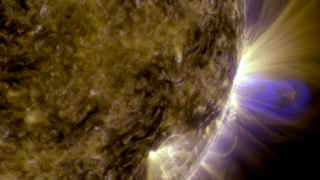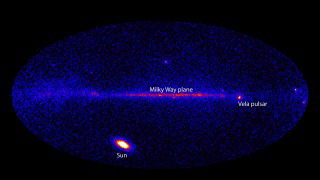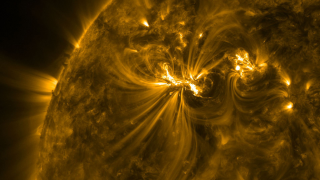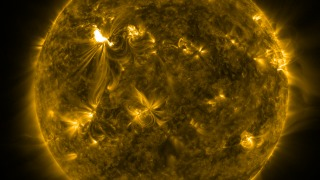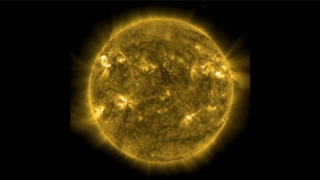HD Close up of March 6th X5.4 Flare
About an hour later, at 8:14 PM ET, March 6, the same region let loose an X1.3 class flare. ?An X1 is 5 times smaller than an X5 flare.
These X-class flares erupted from an active region named AR 1429 that rotated into view on March 2. ?Prior to this, the region had already produced numerous M-class and one X-class flare. ?The region continues to rotate across the front of the sun, so the March 6 flare was more Earthward facing than the previous ones. ?It triggered a temporary radio blackout on the sunlit side of Earth that interfered with radio navigation and short wave radio.
In association with these flares, the sun also expelled two significant coronal mass ejections (CMEs), which are traveling faster than 600 miles a second and may arrive at Earth in the next few days. ?In the meantime, the CME associated with the X-class flare from March 4 has dumped solar particles and magnetic fields into Earth's atmosphere and distorted Earth's magnetic fields, causing a moderate geomagnetic storm, rated a G2 on a scale from G1 to G5. ?Such storms happen when the magnetic fields around Earth rapidly change strength and shape. ?A moderate storm usually causes aurora and may interfere with high frequency radio transmission near the poles. ?This storm is already dwindling, but the Earth may experience another enhancement if the most recent CMEs are directed toward and impact Earth.
In addition, last night's flares have sent solar particles into Earth's atmosphere, producing a moderate solar energetic particle event, also called a solar radiation storm. These particles have been detected by NASA's SOHO and STEREO spacecraft, and NOAA's GOES spacecraft. ?At the time of writing, this storm is rated an S3 on a scale that goes up to S5. ?Such storms can interfere with high frequency radio communication.
Besides the August 2011 X-class flare, the last time the sun sent out flares of this magnitude was in 2006. ?There was an X6.5 on December 6, 2006 and an X9.0 on December 5, 2006. Like the most recent events, those two flares erupted from the same region on the sun, which is a common occurrence.
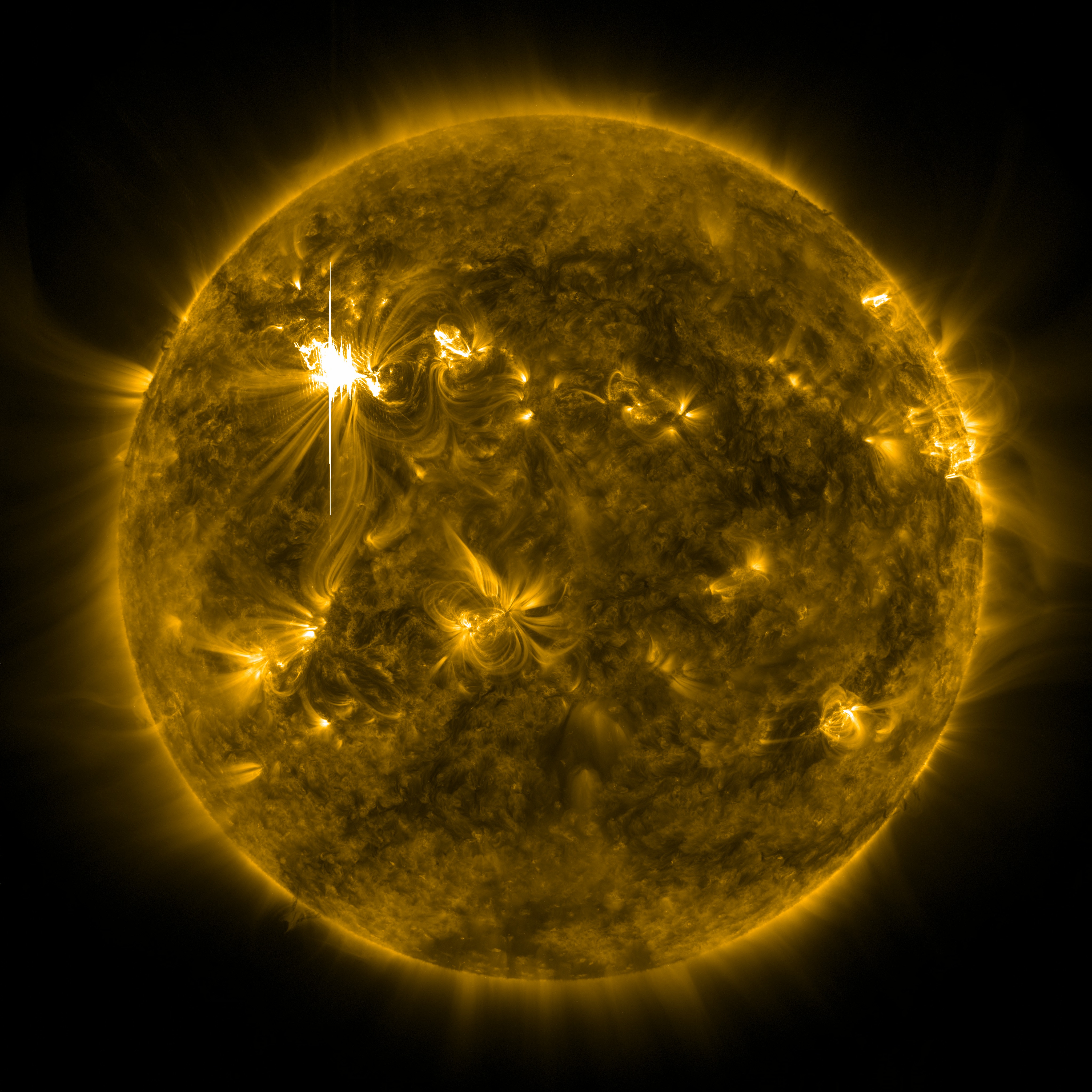
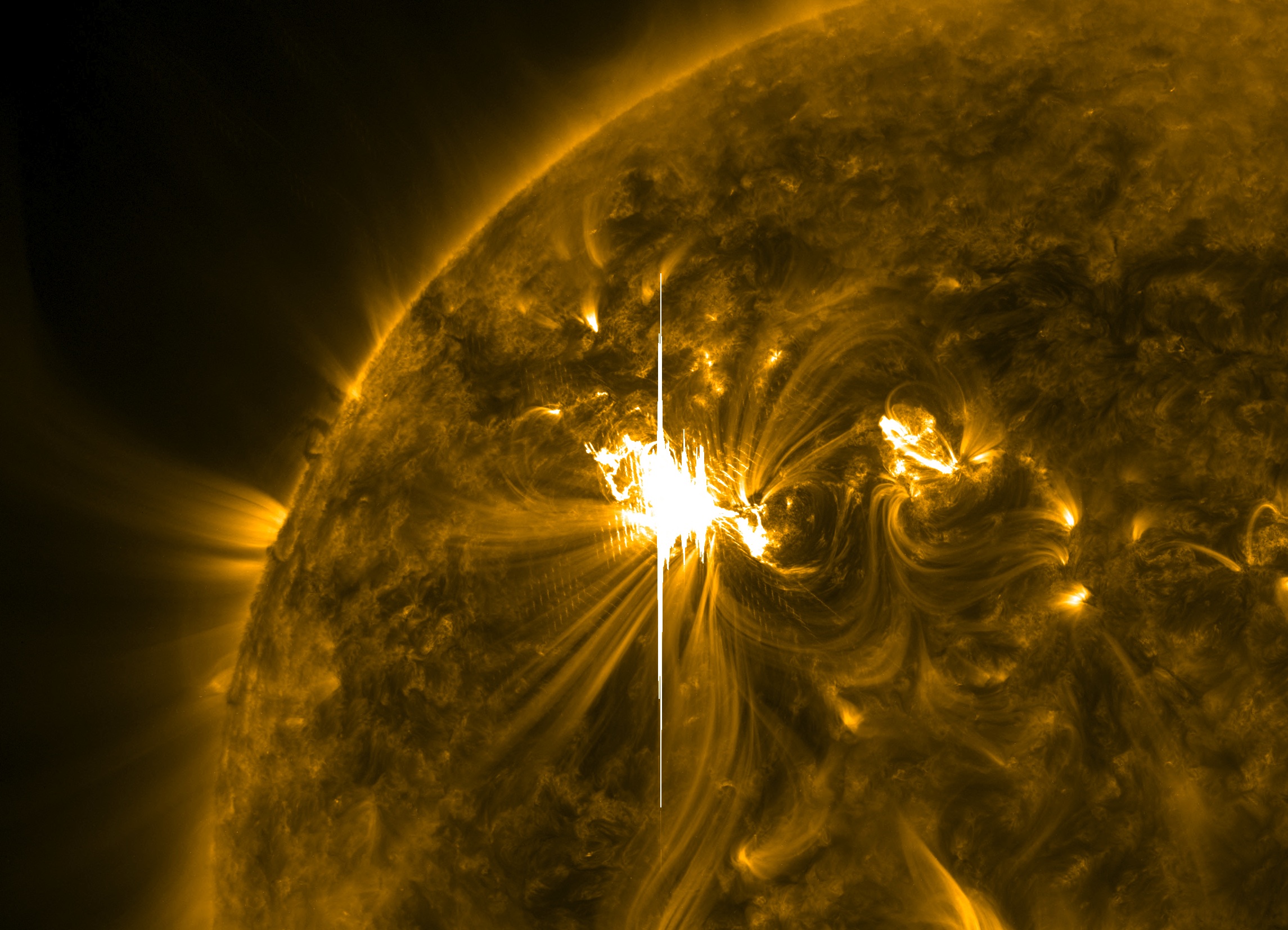
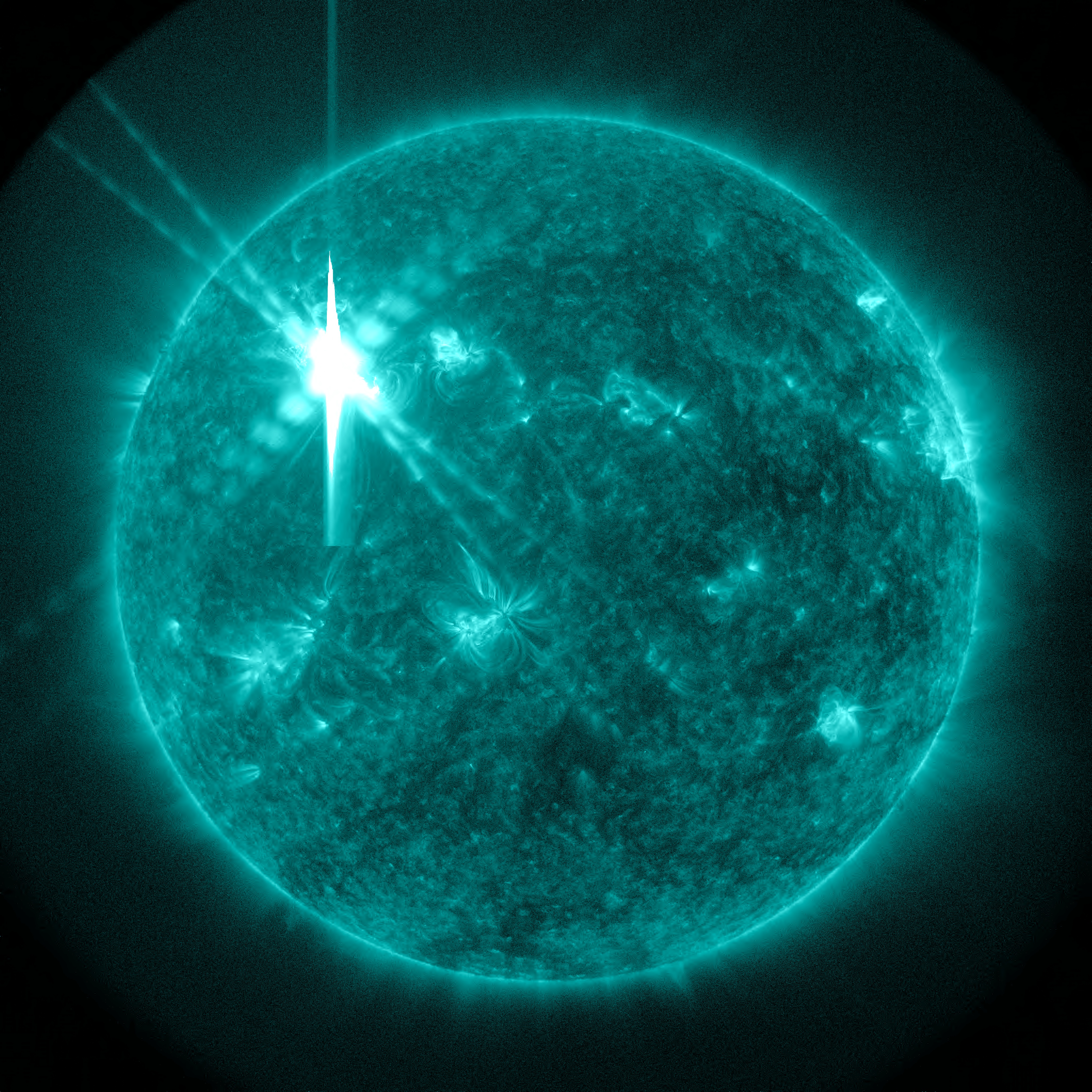

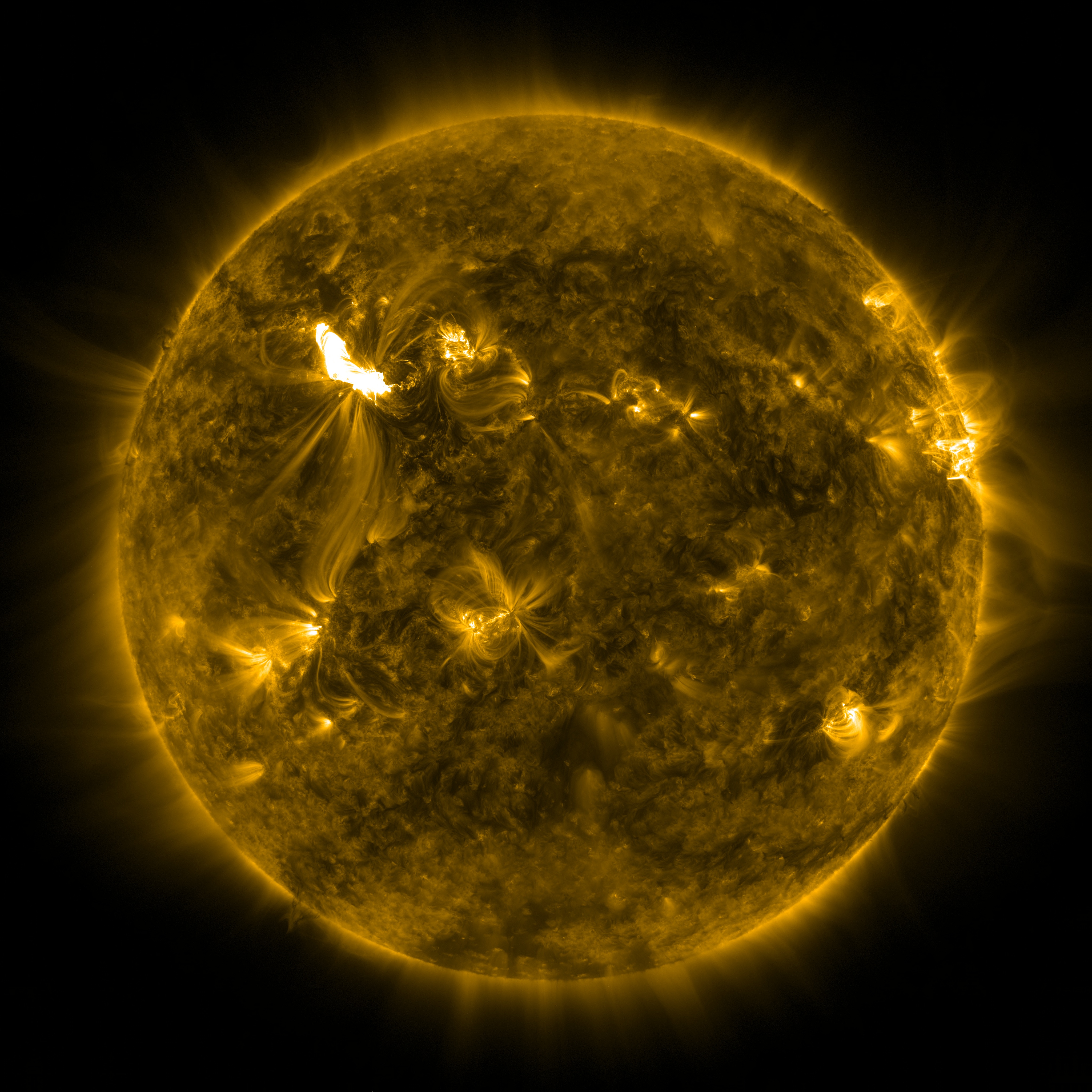
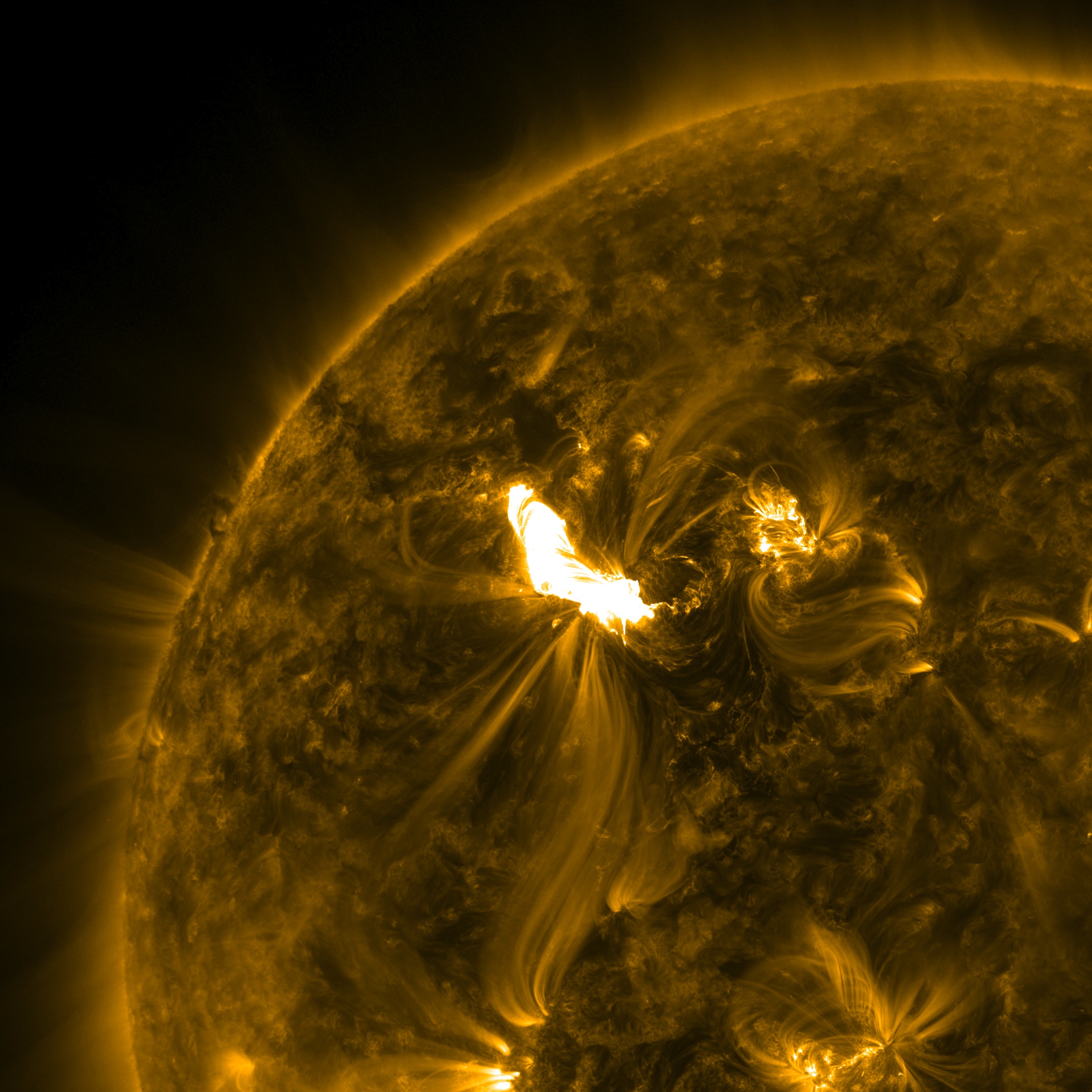
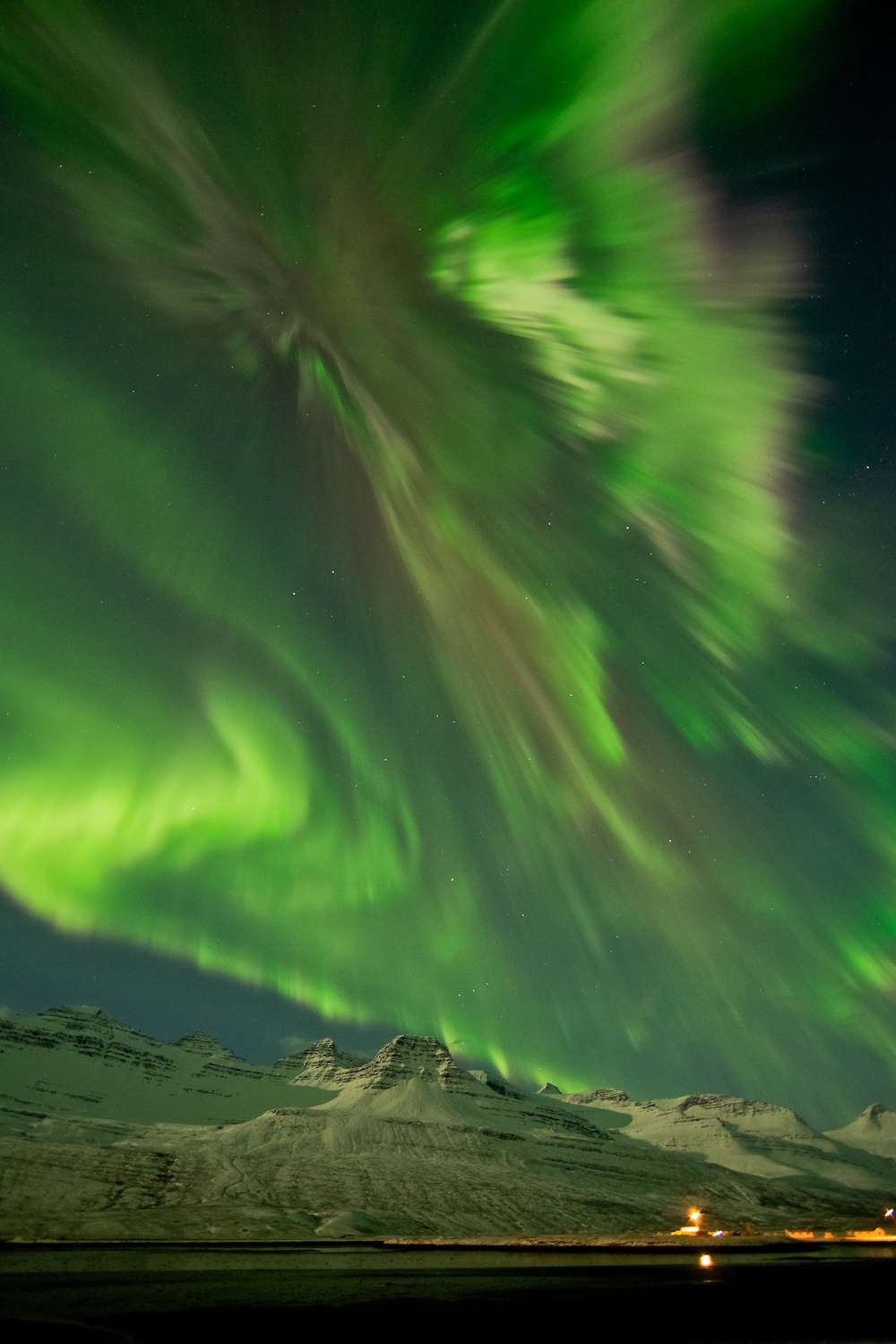
Related
Credits
Scott Wiessinger (USRA): Animator
Scott Wiessinger (USRA): Video Editor
Scott Wiessinger (USRA): Producer
Genna Duberstein (USRA): Producer
Karen Fox (ADNET Systems, Inc.): Writer
NASA/Goddard Space Flight Center
https://svs.gsfc.nasa.gov/10925
Mission:
SDO
This item is part of these series:
Narrated Movies
Heliophysics Breaking News
Five Years of Solar Dynamics Observatory
Goddard TV Tape:
G2012-029 -- March 6 Flare
Keywords:
SVS >> HDTV
SVS >> Music
GCMD >> Earth Science >> Sun-earth Interactions
GCMD >> Earth Science >> Sun-earth Interactions >> Solar Activity >> Solar Flares
GCMD >> Earth Science >> Sun-earth Interactions >> Solar Activity >> Solar Ultraviolet
SVS >> Space Weather
SVS >> SDO
SVS >> Edited Feature
SVS >> Solar Dynamics Observatory
SVS >> Heliophysics
SVS >> Corona
NASA Science >> Sun
GCMD >> Earth Science >> Sun-earth Interactions >> Solar Activity >> Coronal Mass Ejections
GCMD keywords can be found on the Internet with the following citation: Olsen, L.M., G. Major, K. Shein, J. Scialdone, S. Ritz, T. Stevens, M. Morahan, A. Aleman, R. Vogel, S. Leicester, H. Weir, M. Meaux, S. Grebas, C.Solomon, M. Holland, T. Northcutt, R. A. Restrepo, R. Bilodeau, 2013. NASA/Global Change Master Directory (GCMD) Earth Science Keywords. Version 8.0.0.0.0
